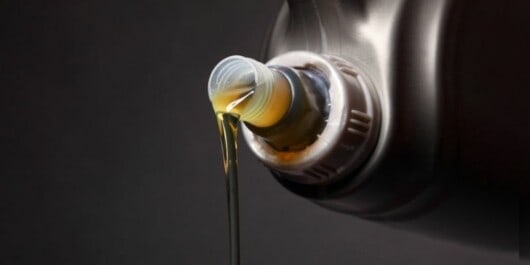Are you a hydraulic log splitter user looking to find ways to check hydraulic fluid on your tool, but don’t know how to? If yes, then this is just the right blog for you.
Checking hydraulic fluid on log splitter involves using a dipstick to read the fluid level in your log splitter. In order for your log splitter to function properly, it will require the proper level of oil. By knowing how to check hydraulic fluid in log splitter, you will be able to catch if you have to top up the oil level. Dipstick analysis may sound slightly goofy, but it will work for your hydraulic log splitters. Not to mention, it will be extremely quick and cheap to do so.
In this guide, you will get to know all about hydraulic fluids, how to check hydraulic fluid on log splitter, what kind of hydraulic fluid to add to your log splitter, how to read a dipstick to check the fluid levels, and more. Continue reading to get all the answers that you are looking for.
What do you mean by hydraulic fluid?
If you have got a hydraulic log splitter, you would already be aware of the hydraulic fluid. But if you are a newbie, this will be a new area for you, and it will pose a couple of questions, especially about how to check hydraulic fluid on log splitter.
Hydraulic fluid is the channel for transferring the power within the hydraulic machinery. The ram mechanism on the log splitter will require hydraulic fluid inside for providing the needed power to split logs with ease. Hydraulic fluid is also used for running tractors, aircrafts, forklifts, cruise ships, and almost every other industry.
It is essential that the hydraulic fluid carries the correct properties to be in an operating condition. It has to be thermally stable, non-corrosive, fire-resistant, and also carry a constant viscosity.
What kind of hydraulic fluid should you use in a log splitter?
Typically, the manufacturer of your log splitter will mention the recommended oil options available within the user manual. However, you need to have an understanding of what you’re looking at when purchasing. Viscosity will be a key term that you need to be aware of, as it is used for describing the fluid’s resistance to flow. Higher viscosity will mean a longer timeframe to pass through the orifice. It means it’ll be thicker and harder to compress, while a low viscosity indicates a thinner fluid oil.

The weather will also play a role in oil viscosity and result in a low index viscosity thicker until it is warmed up. The ISO number displayed on the hydraulic fluid’s box will be the viscosity grade. You must choose a thinner option for cold weather while going for a midrange option for high heat.
How to check hydraulic fluid on log splitter?
It can be quite tricky to read a log splitter dipstick because of how clear the hydraulic fluid is. But there are a few tricks that you need to learn if you’re thinking about topping up the hydraulic fluid in your log splitter. If the hydraulic fluid level is low, you would have already experienced a drop in performance. Moreover, your log splitter will likely be whirring and being pushed to the limits. The right way of checking hydraulic fluid on your log splitter would be by using a dipstick and then performing a dipstick oil analysis.
Dipstick oil analysis may sound slightly goofy, but it will work for your hydraulic log splitter. Moreover, it will be extremely quick and cheap. There is only one small issue, figuring out the clarity of the almost-transparent hydraulic fluid and what the fluid level means.
Before checking the hydraulic fluid levels in your log splitter, you’ll first need to dip the dipstick in the log splitter. Open your log splitter and then put the dipstick inside the log splitter.
Once you have done that for a few seconds, you need to examine the end of the dipstick. You must inspect where the oil mark ends. The marking will indicate the level the oil has reached. In certain dipsticks, you will find holes instead of markings.
If the oil doesn’t reach the holes/markings on the dipstick, you have to add hydraulic fluid. You could go for a high-quality hydraulic fluid option (AW22 or 32 Hydraulic Oil). If the oil dipstick is not showing the oil level, you will have to immediately add oil. The amount of oil you’ll be required to add will vary depending on many factors. It includes the age of your log splitter, the machine’s engine, its working condition, and more.
Aside from the hydraulic fluid level, you should also check the color of the fluid. If the fluid is too dirty, you will need to change the hydraulic fluid.
How to change the hydraulic fluid in your log splitter?
- Place a container under the tank for collecting the old hydraulic fluid. You should ensure it is big enough as the fluid in the container will be good fluid while the fluid on the ground will be bad fluid.
- After that, disconnect the suction hose from the bottom of the log splitter’s reservoir tank.
- Un-thread the inlet filter and then clean it using penetrating oil.
- Allow the hydraulic fluid in your splitter to drain into the container. The reservoir tank will have a capacity of around 3 gallons, while the entire log splitter will have a capacity of around 4.7 gallons. After that, you need to reinstall the cylinder, pumps, hoses, and filter.
- Check the hydraulic fluid level by making use of a dipstick. Make sure that you don’t overfill.
- Replace the dipstick securely and tighten it enough that the top of the threads is flush with the top of the pipe.
- Now comes the time to primp the pump. You should remember that you disconnect the spark plug first before pulling the recoil starter. Now, grip it and then ripe it about 10 times.
- Reconnect the spark plug and then start the engine. If you require help, you should follow the instructions mentioned in the user manual.
- Use the control handle for engaging the wedge. You should extend to the farthest position on the beam before retracting the wedge back to the starting position.
- If needed, refill the reservoir within the range that is marked on the dipstick.
- Continue self-bleeding 12 more times for removing any trapped air from the system.
Tips to keep in mind when changing the hydraulic fluid
Refill the reservoir to prevent damage
A lot of the original hydraulic fluid gets drawn into the hoses and cylinder. This is why you need to refill the reservoir for preventing damage to the hydraulic pump. If you fail to refill the tank, it will void the warranty and turn your hydraulic log splitter into an oversized paperweight.
Remember to tighten the dipstick
When you’re checking the hydraulic fluid, make sure that you tighten the dipstick until the top of the threads is flush with the top of the pipe.
Proper disposal of hydraulic fluid
You should only dispose of any used hydraulic fluid and engine oil at a reliable and approved recycling center.
Use kerosene for flushing out the reservoir tank
Contaminants in the hydraulic fluid could damage the hydraulic components. This is why you’ll always want to use kerosene for flushing out the reservoir tank and hoses when you’re working with the tank, valve, or hydraulic pump. For additional help, you can contact an authorized service dealer.
Never operate your log splitter without appropriate hydraulic fluid
Some hydraulic fluid might overflow from the vent plug as the machine builds heat and the fluid expands. This is how the log splitter balances its levels. This is why you wouldn’t want to operate your log splitter without the appropriate amount of hydraulic fluid in the reservoir tank.
FAQs
How often to change hydraulic fluid in your log splitter?
Many log splitter manufacturers advise that you should change the hydraulic fluid after every 50 hours of operation time. If the hydraulic fluid used is of high quality, then this time will go up to around 150 hours of log splitter operation.
How much hydraulic fluid is needed for a log splitter?
Most log splitter hydraulic fluid reservoirs allow between 3.5 and 7 liters, largely depending on the power and size of the log splitter. A full reservoir of high-quality hydraulic fluid can offer around 150 hours of operation.
What is the best hydraulic fluid for your hydraulic log splitter?
There are numerous exceptional hydraulic fluid options available in the market. Hydraulic Fluid options like AW22 or 32 Hydraulic Oil are formulated specially to improve the performance and longevity of your log splitters.


